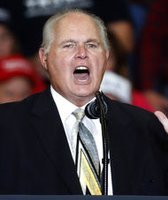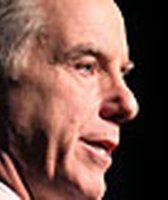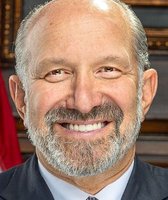Stand up for the facts!
Our only agenda is to publish the truth so you can be an informed participant in democracy.
We need your help.
I would like to contribute

Donald Trump rallies thousands of fans at a stadium in Mobile, Ala., on Aug. 22, 2015. (AP)
Republican presidential candidates defended their ideas to curb illegal immigration at birth and along the border on Sunday, doubling down as news anchors pressed about the practicality of their plans.
On ABC’s This Week, host George Stephanopoulos questioned Donald Trump about how he would deport undocumented immigrants and whether he’d be willing to spend the estimated hundreds of billions of dollars that it would take.
"George, it’s called management," Trump quipped, without offering specifics.
Another angle of Trump’s hard-line immigration plan is ending the right to citizenship by birth, which set off days of debate about the term "anchor babies." Trump campaign manager Corey Lewandowski stood by the phrase in an interview with Jim Acosta of CNN’s State of the Union.
"If you think of the term ‘anchor baby,’ which is those individuals coming to our country and having children here so that their children can be U.S. citizens, there’s 400,000 of those taking place on a yearly basis," he said.
Sign up for PolitiFact texts
Lewandowski’s claim rates Mostly False.
Estimated annual U.S. births to undocumented mothers has fallen to about 300,000 in recent years amid lower, post-recession birth rates for natives and immigrants alike, said Jeffrey Passel, a senior demographer at the Pew Research Center.
Lewandowski’s characterization of all these births as "anchor babies" is also problematic. The data do not show whether every birth to an undocumented mother was for the purpose of tethering the family to American soil.
"I believe that most migrants come for economic reasons and opportunity," said Theresa Brown, the director of immigration policy at the Bipartisan Policy Institute. "The idea that their child may be able to sponsor them for a green card in 21 years is probably too long term to be a primary driver of immigration."
Later on CNN, conservative pundit S.E. Cupp offered another look at birthright citizenship, saying it’s not a practice widely shared across the globe.
"There are actually only 30 countries that practice birthright citizenship, making the U.S. kind of an anomaly," she said.
Cupp’s claim is True. A list compiled by NumbersUSA, which favors reduced immigration, shows 33 countries with a similar policy of jus soli, or "right of the soil."
Birthright citizenship in the United States was first made law by the 14th Amendment of the Constitution, primarily to grant legal status to emancipated slaves. The amendment says that "all persons born or naturalized in the United States, and subject to the jurisdiction thereof, are citizens of the United States and of the State wherein they reside."
The United States is joined by Brazil, Argentina and Mexico, along with nearly every country in Central and South America. Canada is the only other "developed" country, as defined by the International Monetary Fund, with such a law.
Talk turned to the border in Acosta’s interview with retired neurosurgeon and GOP candidate Ben Carson. Carson raised the idea of using drones to help out the stressed border patrol and take out smugglers’ caves.
"We're not getting support from the federal government to deal with these people," Carson said. "They're being outgunned. Fifty-six percent of that border is not under our control."
Carson’s claim that about half of the border is "not under our control" rates Half True.
Carson appears to be referencing a 2011 Government Accountability Office report. It said U.S. Customs and Border Protection considered 873 miles of the almost 2,000-mile U.S. border with Mexico under "operational control" in fiscal year 2010, meaning the areas had enough agents to deter or detect illegal entries immediately, or agents could still identify most entries from as far as 100 miles away.
The remaining portion of the border — about 1,120 miles, or the 56 percent to which Carson is likely referring — fell under two other measures of control that "were not acceptable for border security." That doesn’t mean there is an utter lack of control, but that the agency’s ability to detect or respond (or both) to crossings was hampered by a lack of resources or infrastructure.
Christopher Wilson, deputy director of the Mexico Institute at the Woodrow Wilson International Center for Scholars, gives Carson credit for using the term "control," since that’s the word the border patrol used in part to measure its own effectiveness. But it’s impossible to stop everyone from crossing the border, he said, and border conditions have improved.
"All the different measures point to an overall improvement in border security over at least the last 10 years," Wilson said. "We don’t know what a secure border is, because we’ve never defined it as a society."
Our Sources
See fact-checks.




















































